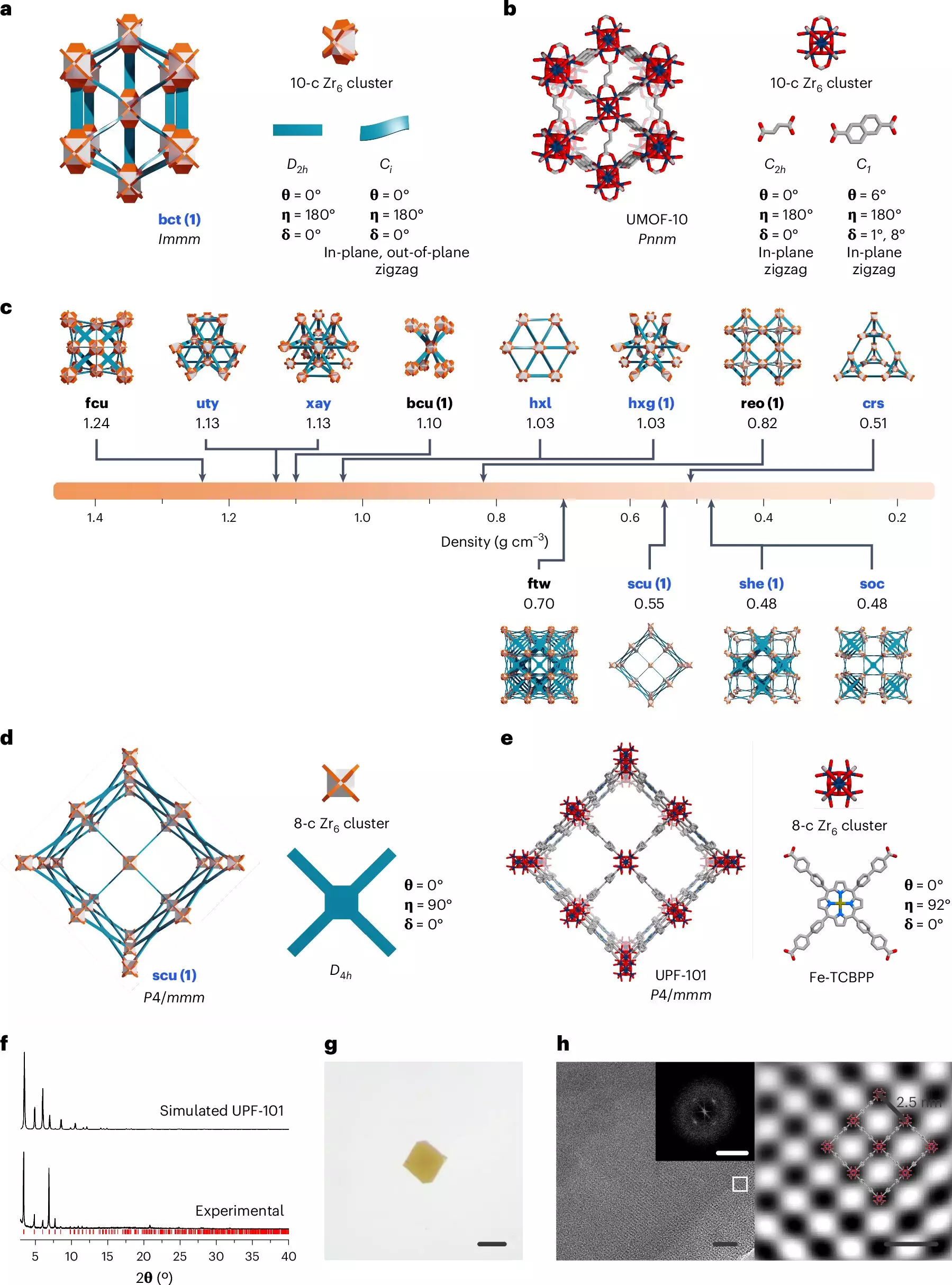A groundbreaking strategy, known as the “Up-Down Approach,” has been introduced by a research team led by Professor Wonyoung Choe at Ulsan National Institute of Science and Technology (UNIST) in South Korea. The team’s innovative approach has the potential to greatly accelerate the development of metal-organic frameworks (MOFs), which play a vital role in various applications such as carbon dioxide capture, storage, and catalysis.
Traditionally, MOFs have been designed using either a bottom-up or top-down approach. The bottom-up method involves selecting metal clusters and organic ligands and exploring potential structures, while the top-down method starts with a desired structure and identifies the necessary components to achieve it. These traditional approaches are limited by predefined components and structural constraints, making it challenging to discover new and novel structures.
The Up-Down Approach combines aspects of both the bottom-up and top-down methods, allowing for a more extensive exploration of structures based on metal clusters before selecting suitable organic ligands. This approach overcomes the limitations of traditional methods, enabling the discovery of previously inaccessible structures. By facilitating new combinations of diverse elements, the Up-Down Approach opens up possibilities for the development of innovative materials with tailored properties.
Through the application of the Up-Down Approach, the research team identified 26 new zirconium-based MOFs, known for their high chemical stability. They successfully synthesized two of these new structures, demonstrating the effectiveness of their novel strategy. Additionally, the team utilized a “Ribbon Representation” to visualize the precise geometric features of organic ligands, enhancing the accuracy and efficiency of the design process.
Jiyeon Kim, the first author of the study, highlighted the power of the Up-Down Approach in rapidly exploring and developing new materials with diverse chemical properties. Co-first author Dongsik Nam emphasized the potential for this research to pave the way for the discovery of innovative materials applicable across various fields, such as catalysis, gas storage, and environmental remediation. Professor Wonyoung Choe expressed the significance of their study in expanding the chemical space of MOFs, thereby broadening their potential applications.
The Up-Down Approach represents a significant advancement in the field of MOF research, offering a powerful tool for the rapid development of new materials with tailored properties. By transcending the limitations of traditional methods, this innovative strategy has the potential to revolutionize the creation of metal-organic frameworks and unlock new opportunities for advancements in diverse applications.


Leave a Reply